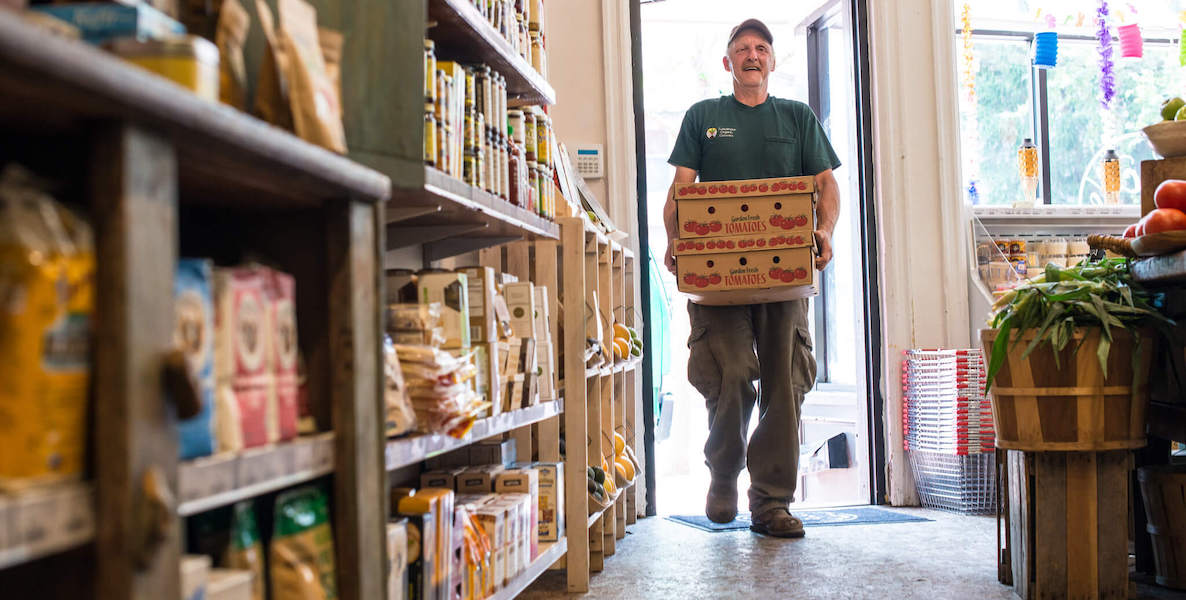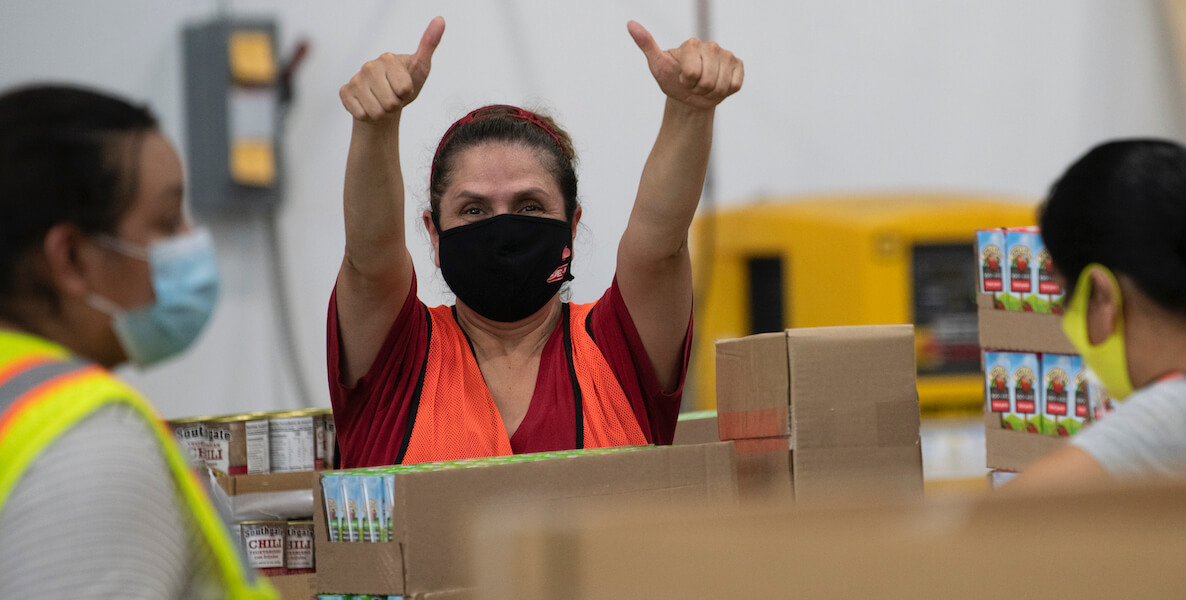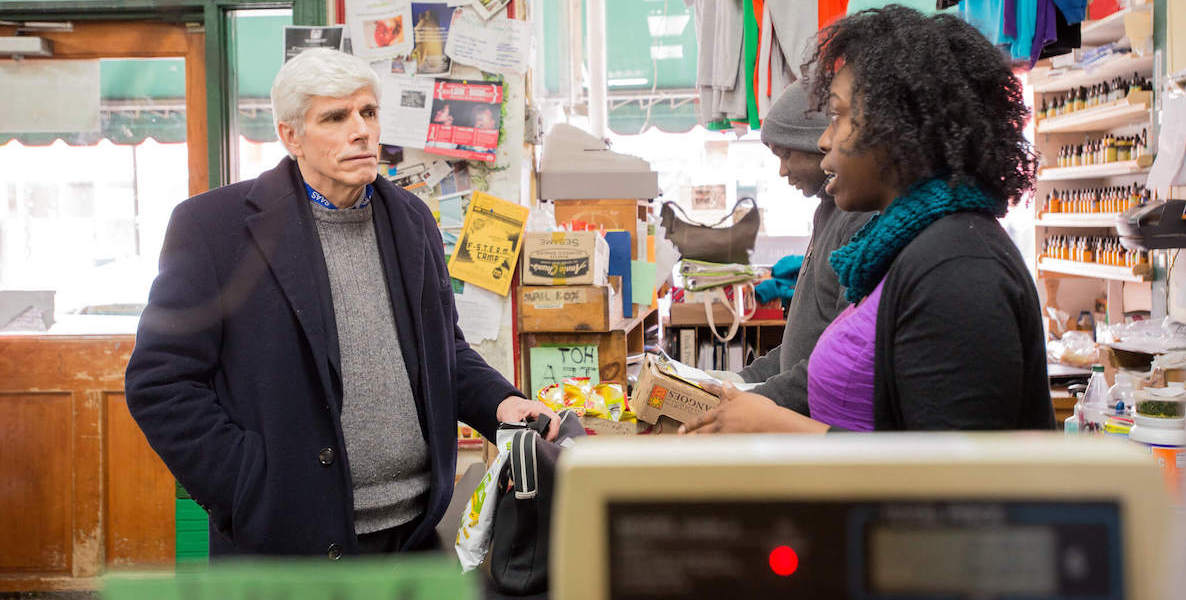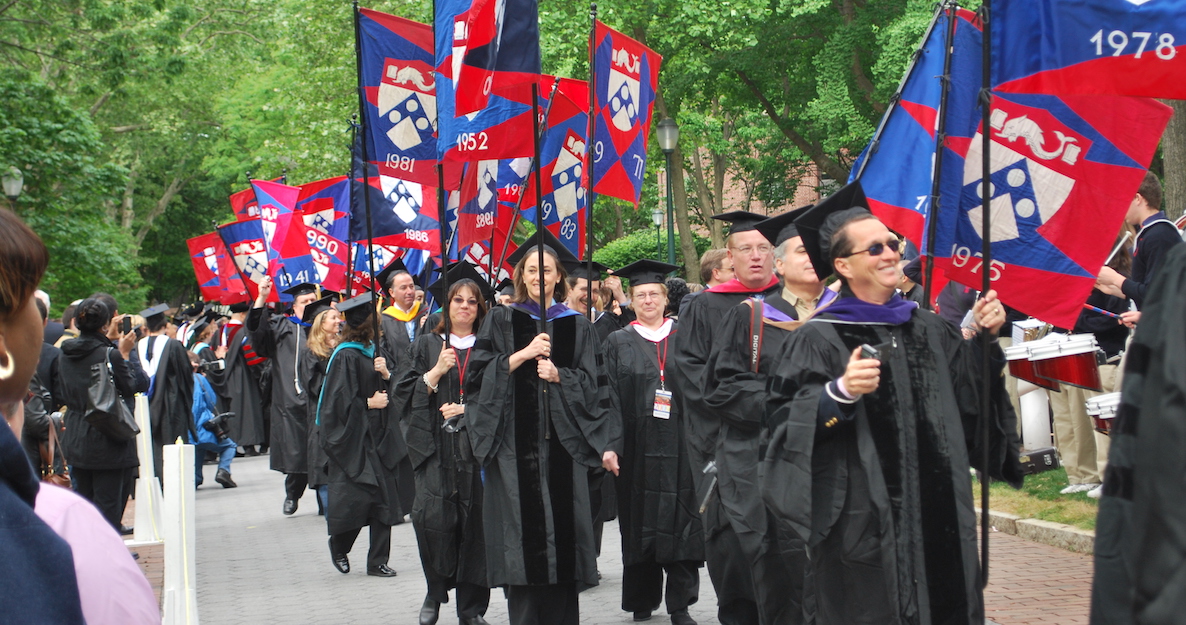Throughout the Covid-19 crisis, small businesses have been struggling. As discussed in earlier articles, federal relief efforts like the Paycheck Protection Program (PPP) have left too many behind, and the economic road to recovery will be lengthy.
Throughout the summer, then, we’ve been working to understand the state of small business prior to the Covid-19 crisis, as a baseline to guide the substantial work that needs to be done during and following the pandemic.
![]() This focus has led a group of us to conduct national and state-level analyses of the Annual Business Survey, trying to understand specifically the state of Black-owned businesses in America. We have also done a deep dive into the work of foundations, think tanks, consultancies, constituency organizations, government, and academia to understand what strategies have been deployed in the past to promote economic inclusion and equitable growth.
This focus has led a group of us to conduct national and state-level analyses of the Annual Business Survey, trying to understand specifically the state of Black-owned businesses in America. We have also done a deep dive into the work of foundations, think tanks, consultancies, constituency organizations, government, and academia to understand what strategies have been deployed in the past to promote economic inclusion and equitable growth.
What we have found is a bit troubling. Despite political support (in rhetoric at least) for small business across the partisan divide, the field has not been the focus of sustained research, partly because the Small Business Administration’s research budget pales in comparison with those of HUD, DOT and other federal agencies.
Small business research is, therefore, largely conducted by a small network of action-driven consultancies and think tanks which advise cities and business groups on policy and strategy. These organizations have tended to examine local small business ecosystems along five dimensions: demand access, business support, capital access, place-based initiatives and community benefits.
Given the distributed nature of the research, we thought it would be helpful to showcase recent reports of high quality to serve as a one-stop-shop resource for practitioners. We know that our effort is not comprehensive, so we look forward to hearing about other practice-driven research that has been conducted or undertaken, particularly on the topic of growing Black-owned businesses (and minority- and women-owned business in general) at scale.
A History of Local Innovation
To set a baseline, we want to highlight the data resources at the federal level, namely through the Annual Business Survey (ABS). Formerly the Survey of Business Owners (SBO), the ABS represents our most comprehensive view of the revenues, size and sectors of businesses, at the national, state, metro, county, and city levels, broken out by gender, race, ethnicity and veteran status.
After years of cutbacks at the U.S. Census Bureau, the ABS is woefully insufficient, but it is likely the first place cities should look when trying to get a sense of what sort of businesses operate in their jurisdiction, and the race and ethnicity of their business owners.
We’ve used this data at the national and state level, for example, to show that Black-owned businesses generally have fewer employees, lower average sales, and lower payroll than other firms. We’ve also found that there are approximately 55 U.S. inhabitants for every employer business, compared to approximately 335 Black residents for every Black-owned employer business in the US.
Other organizations have also drawn on the ABS and SBO to animate our understanding of the challenges facing Black-owned businesses. For example, the Association for Enterprise Opportunity published a 2017 report that combined SBO data with other data sources to explore Black business ownership trends, sectors, wealth and barriers, and to create a typology of black businesses.
Similarly, the Center for Policy Analysis and Research, on behalf of the Congressional Black Caucus Foundation, analyzed the difference between immigrant and non-immigrant entrepreneurs to home in on the needs and opportunities of Black-owned business.
Despite political support for small business across the partisan divide, the field has not been the focus of sustained research, partly because the Small Business Administration’s research budget pales in comparison with those of HUD, DOT and other federal agencies.
At the local level, Boston, in collaboration with Next Street, used SBO data to set a baseline understanding of the state of their minority- and women-owned businesses as part of their Small Business Plan. Seattle’s Legacy Business Study, focusing on small, community businesses, combined SBO data with other sources to understand the challenges specific to these businesses and develop possible support mechanisms.
As the ABS data was released only in May of this year, we’ve seen limited uptake. Already, however, the Philadelphia Center City District has put together a report on the state and density of businesses generally, and Black-owned businesses specifically, using ABS data.
Map the Ecosystem
As cities try to help small businesses survive the Covid-19 crisis and emerge through the other end, they must understand the ecosystem of small business supply, demand, and support. Next Street has helped Chicago and Columbus map their small business ecosystems and develop agendas to help them grow.
Beyond a general understanding, significant effort has been made over the past 20 years across five necessary dimensions to grow local and minority-owned business: demand access, business support, capital access, place-based initiatives, and community benefits.
Demand Access
Demand access fits within the broader anchor institution framework, wherein corporations, hospitals and universities invest in and support their local communities, as part of their mission as organizations anchored in place.
The Democracy Collaborative and their Healthcare Anchor Network has produced helpful reports for places like RUSH University Medical Center, part of Chicago Anchors for a Strong Economy, and toolkits on local impact investing, local hiring, and local purchasing, for all of their Network members.
In Philadelphia, the Philadelphia Anchors for Growth and Equity shared information on their local vendors, enabling the Economy League of Philadelphia to conduct a landscape analysis of potential suppliers.
The Initiative for A Competitive Inner City has been doing this work for decades, producing reports and roadmaps for places like Newark, and suggesting frameworks for using anchors to further economic development. Other examples abound, including the groundbreaking work of University Hospitals in Cleveland and the Baltimore Integration Partnership.
The wealth of existing programs has allowed LISC and Forward Cities to extract and summarize best practices. Academic research, focusing on minority set-aside programs at the city-government level, found that such set-asides increased the number of minority-owned firms,[1] and improved market access,[2] demonstrating the critical potential of aggregating anchor institution purchasing power.
Business Support
Technical assistance, business support, and incubation and acceleration are a necessary part of the ecosystem to grow local and Black-owned businesses. Places like the Northside Economic Opportunity Network provide back-office support, technical assistance, and training to low-to-moderate income entrepreneurs in North Minneapolis. The Minority Business Accelerator in Cincinnati provides support to already existing Minority-owned businesses, helping them to reach scale.
A 2019 report from Endeavor highlighted three recommendations for scaling Black- and Hispanic-owned businesses: developing industry-specific programs, creating leadership pipelines to address knowledge gaps, and fostering mentorship programs to encourage successful entrepreneurs to share their knowledge with those just coming up.
Capital Access
Minority-owned businesses begin with lower levels of startup capital, are more likely to be denied bank loans, and, when they do receive loans, pay higher interest rates, according to research for the Minority Business Development Agency. This has real implications for the success of minority-owned businesses in general, and Black-owned businesses specifically, highlighted by the AEO Report, mentioned above, and additional work by Prosperity Now.
The Kauffman Foundation, in Kansas City, MO, has been a leader in this space. They’ve supported research finding disparities in access to startup capital and post-startup financing, which negatively impacts Black-owned businesses, and have proposed possible solutions to remove barriers to capital access for entrepreneurs.
It is imperative that all actors, from anchors, to funders, to labor, and small businesses themselves, think critically about the gaps in the support systems prior to the current crisis, and what opportunities exist to rethink the old way of doing business.
Other groups, such as the Expanding Black Business Credit Initiative, have also looked at possible solutions to scale Black-owned business finance, garnering support from larger banks like Wells Fargo. At the local level, Next Street has looked at capital issues in Chicago, finding existing equity gaps for Black and Hispanic entrepreneurs, and highlighting emerging solutions to address those gaps.
Place-Based Initiatives
Of course, business has to happen somewhere. For most retail businesses, that place is a business district. These areas of dense, consumer-facing businesses have been a centerpiece of economic development practice for decades.
For the past 30 years, Philadelphia has conducted a semi-regular survey of their business districts. They have business district typologies, analyze their vacancies and gross leasable area, and characterize their physical environments. In 2009, they worked with Econsult, Living Cities, and the William Penn Foundation to create a groundbreaking report analyzing business district successes and challenges.
In St. Louis, Mass Economics analyzed place as part of the 2020 Vision Equitable Economic Development Framework. In it, they characterize employment districts and centers, in addition to commercial corridors, in order to develop context-specific shared visions for each site. Within the academy, Stacey Sutton has looked at the impact of merchant associations and Business Improvement Districts in New York.
Community Benefits
Over the past 20 years, community benefits agreements (CBAs) and project labor agreements (PLAs) have moved towards being the norm in the development space. At the Nowak Metro Finance Lab, we’ve looked at how Opportunity Zones can be redesigned to have a clearer focus on delivering community benefits.
Mechanisms like PLAs were utilized by University Hospitals during their capital expansion (discussed above), and have been used on a very large scale in California, as chronicled by this 2002 report from the National Economic Development and Law Center.
For those new to CBAs, Policy Link has provided comprehensive information on the key aspects of how they work, including example documents, as part of their All-in Cities Policy Toolkit. If infrastructure funds flow from the federal government in the coming year, cities need to be ready to ensure that those dollars do more than simply rebuild physical structures.
By thinking about the integration of opportunity zone investments, community benefits agreements, and project labor agreements, federal funding can catalyze real community wealth building. Cities should be thinking about the institutions necessary to ensure that those dollars grow Black-owned businesses and local employment, and generate a multiplier effect for the creation of long-term community wealth.
Actionable Strategies Moving Forward
Cities have been working diligently across these five dimensions—demand access, business support, capital access, place-based initiatives, and community benefits—for the past 20 years. Yet often, only one or two of these has been front-and-center in a given city at one time.
Never before have we seen a crisis like Covid-19, meaning that cities must deploy resources and effort now, across all five dimensions, to ensure they have a robust small business ecosystem ready to drive recovery.
Cities need to know what their business ecosystem looked like prior to the onset of Covid-19
Working with their Economic Development office and local Chambers of Commerce, cities should examine the US Census Annual Business Survey data.
How many Black-owned businesses were there in 2017? What do cities stand to lose? The local Economic Development office and Chamber may also have directories and networks of certified Minority-owned businesses operating within the city. Additionally, the Mastercard Center for Inclusive Growth provides an Inclusive Growth Score as another baseline indicator.
Cities should gather with their anchor institutions
Contact hospitals, universities, and large corporations and ask them to commit to redesign their supply chains around local and Black-owned businesses. Though anchors may also be stressed under the weight of Covid-19, supporting their communities now means that there will be healthy communities tomorrow.
Minority-owned businesses begin with lower levels of startup capital, are more likely to be denied bank loans, and, when they do receive loans, pay higher interest rates. This has real implications for the success of Black-owned businesses specifically,
Following the lead of PAGE in Philadelphia and CASE in Chicago, now is the time for anchors to commit to better data disclosure, and aspirational goals around procurement. New intermediaries should also be developed to match demand and supply.
Cities should turn to their existing business incubators and accelerators
Ask organizers of business incubators and accelerators what they’re doing to help entrepreneurs of color. Back-office support, mentorship, and connections to networks, aggregators, and purchasers are necessary to create and scale business. Right now, the Cincinnati Minority Business Accelerator is the exception rather than the rule. That needs to change.
Cities should turn to their local funders
Turn to banks, Community Development Finance Institutions (CDFIs), and philanthropy and ask them how they’re innovating around capital access. Decades of research makes it clear that historic and current discrimination makes capital access an immense barrier to Black entrepreneurs. Small debt products won’t cut it anymore. Are local funding institutions inventing new patient capital and equity products? Are they examining lending discrimination and collecting the information required of Section 1071 of the Dodd-Frank Act?
Cities should rethink the function and success of business districts
Who owns the land in the business districts, and what would happen if there were mass vacancies? Do they have policies and institutions in place, like a land bank, to ensure that commercial corridors don’t end up in the hands of private equity?
When the pandemic ends, are there strategies around drawing non-retail businesses to those business districts, in order to encourage foot traffic throughout the day? What sort of support exists for these business districts, in the form of merchant associations and placemaking organizations?
The Nowak Metro Finance Lab is currently teasing out the notion of Regenerators for urban business districts with a network of stakeholders in Cincinnati. Stay tuned!
Has the city ever negotiated a community benefits agreement or project labor agreement?
If not, they should examine model CBAs and talk with community groups about the type of guarantees they would want if sudden federal investment were to catalyze development in their neighborhoods. What percent of workers should be local? What percent of businesses, both during construction and thereafter, should be Black-owned? How can qualified opportunity zone investments advance community goals, particularly around ownership of key assets?
![]() If cities took these steps now, they may be able to strengthen their business ecosystems in the short term and emerge from the crisis prepared to catalyze recovery. It is imperative that all actors—from anchors to funders to labor and small businesses themselves—think critically about the gaps in the support systems prior to the current crisis, and what opportunities exist to rethink the old way of doing business.
If cities took these steps now, they may be able to strengthen their business ecosystems in the short term and emerge from the crisis prepared to catalyze recovery. It is imperative that all actors—from anchors to funders to labor and small businesses themselves—think critically about the gaps in the support systems prior to the current crisis, and what opportunities exist to rethink the old way of doing business.
We hope that the myriad resources listed in this newsletter help them do that.
Bruce Katz is the director of the Nowak Metro Finance Lab at Drexel University, created to help cities design new institutions and mechanisms that harness public, private and civic capital for transformative investment. Ben Preis is a doctoral student at MIT’s Department of Urban Studies and Planning and is currently a graduate research analyst at the Nowak Metro Finance Lab at Drexel University.
Header photo by Lance Cheung / U.S. Department of Agriculture / Flickr







